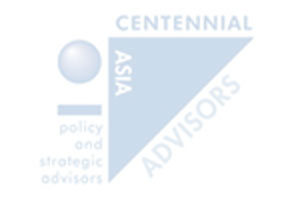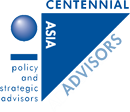Asian Insights
A summary of “Asian Insights” weekly update is published here. The full version is available through paid subscription. Please click here to register your interest. Our executive will get in touch with you.

Highlights from the CAA Weekly Table:
Asian economic prospects improving but question marks remain over policy
- China’s rate cut shows that the economy is weaker than the authorities anticipated. Expect more easing measures, such as infrastructure spending and higher fiscal spending.
- India’s recovery continues but sustained higher growth needs a revival in capital spending which is not evident yet. The reform cycle appears to have stalled for now.
- Korea’s growth prospects are solid: expect the BOK to raise rates again. Indonesia looks set to out-perform. Despite a court ruling against it, Indonesia’s labour reforms remain on track. Malaysia is poised for a strong economic recovery while the Philippines’s prospects have also improved – so long as the omicron variant does not turn out to be deadly.
- Thailand’s heavily tourism-reliant economy is most at risk if the omicron variant spreads dangerously.
Geo-political risks: Taiwan a sticking point, not a danger point yet
- The US and Japan have issued a flurry of warnings to China not to step up aggression against Taiwan. Japan’s policy shift is particularly notable for its robust approach to China: higher defence spending and a more aggressive posture to defend against missile attacks.
- China’s strategic position in Asia has weakened as several key countries – Japan, India and Australia – have adopted a harder line towards China. Even the Philippines appears to be reverting to its traditional pro-US line. The latest Asia Power Index shows China’s position relative to the US weakening for the first time in years.
- These reverses could persuade China to review its approach. It might take advantage of forthcoming talks with the US to adopt a less provocative approach to its neighbours.
Covid-19: Omicron variant fuels uncertainty moving into 2022
- Under our baseline scenario moving into 2022, we expect global growth to ease a notch, but remain highly supportive of Asian economies, thanks to solid demand for manufactured goods and commodities, as the bevy of PMI figures goes to show.
- That has not changed, in spite of the emergence of the Omicron variant, which, anecdotally, appears to be more transmissible but less deadly. The incessant rise in caseloads and hospital admissions in South Africa serves as a foreboding of things to come for Asia.
- We outline two extreme scenarios, centred on the differing transmissible, mortality and resistance to vaccines. But there is reason to be upbeat, given that viable vaccines and prospective treatment options are in the pipeline. The hit to economic activity has also diminished with every passing wave as the world learns to co-exist with Covid-19.
- With the Fed set to accelerate the tapering of asset purchases with an eye on raising rates in mid-2022, there are no good options for policymakers if Omicron sparks a new wave of infections, particularly in economies where vaccination rates are sub-par, such as India, Indonesia and the Philippines. Both fiscal and monetary policy are at its limits. Asia could be in for a choppy ride, as it all hinges on the epidemiological behaviour of the new strain.

Highlights from the CAA Weekly Table:
COVID-19 and the omicron variant: don’t rush into pessimistic conclusions
- The omicron variant has shaken confidence in the economic recovery. But, note that medical experts have cautioned against drawing conclusions until more tests are done. Note, too, that while governments have imposed renewed border controls, they have been generally loath to tighten domestic restrictions. Moreover, medical progress continues to give hope that the dangers associated with the virus can be further contained with time.
Asian economic prospects:
- China’s industrial profits continue to grow, suggesting that the corporate sector stresses are probably contained and not likely to prompt policy makers into large-scale stimulus.
- South Korea’s economy is improving sufficiently to allow the central bank to mount further rate hikes but the timing may depend on other factors including the presidential election.
- The Philippines’ fiscal is likely to undershoot the target.
Asian currencies more resilient against Fed policy normalisation
- With inflationary pressures raising the risk of faster monetary policy normalisation in the US, concerns are rising about the impact on Asian currencies.
- We think that the worst is over for these currencies. The SGD, VND and TWD should continue to benefit from export strength, the alleviation of shortages and the reopening of borders.
|
YTD Currency v USD |
Currency Volatility |
YTD Reserve accumulation (%) |
4QMA Current Account (% of GDP) |
3MMA Inflation v target (%) |
Z-scores, the lower the better |
|
| CNY |
1.1 |
1.1 |
3.3 |
1.9 |
-2.0 |
0.7 |
|
INR |
-1.5 |
1.2 |
40.1 |
0.5 |
0.7 |
1.0 |
|
KRW |
-10.3 |
1.6 |
10.8 |
5.7 |
0.8 |
0.9 |
|
TWD |
2.1 |
0.8 |
14.1 |
14.4 |
0.5 |
0.0 |
|
IDR |
-3.0 |
1.6 |
7.7 |
0.2 |
-1.4 |
1.6 |
|
MYR |
-6.2 |
1.1 |
8.9 |
3.8 |
0.4 |
0.6 |
|
PHP |
-5.1 |
0.9 |
21.9 |
1.3 |
1.8 |
1.2 |
|
SGD |
-4.1 |
1.0 |
61.3 |
19.4 |
0.8 |
-4.3 |
|
THB |
-12.1 |
1.5 |
-5.7 |
-2.3 |
-0.7 |
0.9 |
|
VND |
-0.1 |
0.1 |
28.1 |
-2.2 |
-1.8 |
-2.5 |
Singapore: stars are aligned for new policies in 2022
- Three factors – brightening economic prospects, the political timetable and the need to respond to post-covid global trends – are set to prompt major policy moves in 2022. Sectors with a 17.5% weight in GDP are poised to rebound strongly while other sectors should benefit from secular trends. The political succession will be clarified by next year as well. Policy makers are keen to refocus their energies on preparing Singapore for the post-covid era.
- Look for more monetary tightening in April, an announcement of a GST rate hike in February and more signals on a wealth tax and carbon pricing. Some political reforms are also likely.
